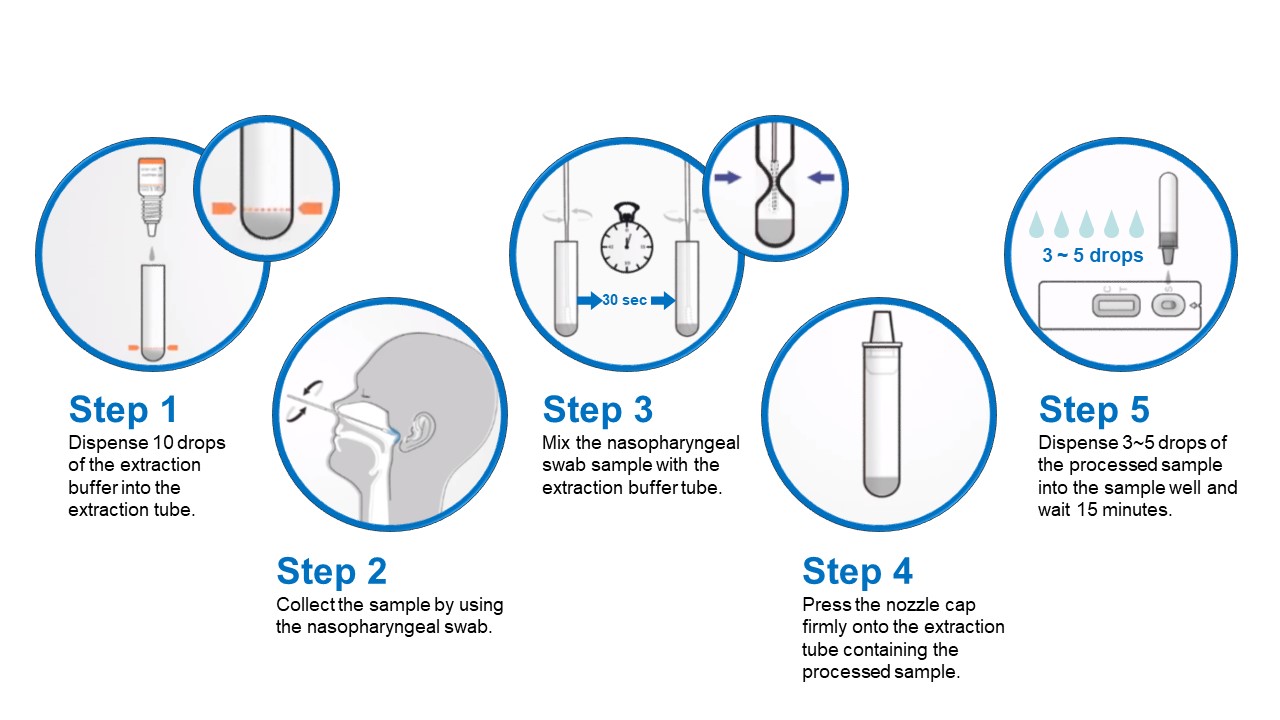
The earlier a disease can be detected the faster it can be contained in order to minimize the spread and damaging effects of diseases to others Subjects. Laboratory records of the Elmwood Pediatric Group EPG Rochester NY were.
Why is a rapid antigen detection test necessary.
Why is a rapid antigen detection test necessary. A rapid antigen detection test is a test that is able to detect the presence of a pathogen in minutes compared to the lengthy time needed to grow a pathogen and identify it in the lab. Why is a rapid antigen detection test necessary. What does ELISA stand for.
Why are enzymes used in this immunoassay. Why do you need to assay positive and negative control samples as well as your experimental samples. Why is a rapid antigen detection test necessary.
What does ELISA stand for. Why are enzymes used in this immunoassay. A rapid antigen detection test RADT also known as the rapid streptococcal test detects the presence of GABHS cell wall carbohydrate from swabbed material and is considered less.
Why is a rapid antigen detection test necessary. A rapid antigen detection test is necessary in order to verify whether the patient has been exposed to a virus so doctors or the patient can act quickly to prevent from disease. Rapid antigen testing to detect group A Streptococcal GAS infection provides important information for the antibiotic decision making for patients presenting with acute pharyngitis.
Pharyngitis accounts for over 13 million office visits annually in the United States highlighting the importance of these decisions. Patients with GAS pharyngitis can develop either suppurative or non-suppurative. The Panbio COVID-19 Ag Rapid Test is an antigen test that can be used for point of care testing to detect COVID-19 faster than the regular laboratory-based PCR test for COVID-19.
Currently all rapid antigen screening is being conducted using the Panbio test. Like RT-PCR the rapid antigen detection test too seeks to detect the virus rather than the antibodies produced by the body. While the mechanism is different the most significant difference between the two is time.
While experts say that rapid antigen tests can help countries with out-of-control outbreaks quickly detect where hot spots are Indias practice of conflating the data from rapid tests and traditional RT-PCR ones risks obscuring its true infection picture. Why is rapid detection of disease exposure important. The earlier a disease can be detected the faster it can be contained in order to minimize the spread and damaging effects of diseases to others Subjects.
A rapid test is available to detect an antigen associated with the bacterium Clostridium difficle which causes antibiotic-inducted colitis. However it is often necessary to also run a test for C. The gold standard swab is a molecular test that detects the RNA of the virus.
If necessary fast-tracked versions of it can produce results in two hours. Detects easy-to-find surface markers on the outside of the virus and avoids extraction and amplification steps. Researchers or clinicians collect samples from easy-to-reach areas like the nasal passage where the virus tends to replicate the most.
This repeat testing has quickly identified people with COVID-19 informing infection prevention and control measures thus preventing transmission. In this case and where rapid test turnaround time is critical there is value in providing immediate results with antigen tests even though they may have lower sensitivity than NAATs. RAPID ANTIGEN TEST RA ANTIBODY SEROLOGY TEST.
Why is the test used. PCR tests look for pieces of SARS-CoV-2 the virus that causes COVID-19 in the nose throat or other areas in the respiratory tract to determine if the person has an active infection. Antigen tests look for pieces of proteins that make up the SARSCoV-2 virus to determine if the person has an active.
The frequency of obtaining false-negative Group A Streptococcal GAS rapid antigen detection RAD tests utilizing currently available kits in a private practice setting and the cost effectiveness of requiring follow-up throat cultures were studied. Laboratory records of the Elmwood Pediatric Group EPG Rochester NY were. Objectives There is limited information on the performance of rapid antigen detection RAD tests to identify SARS-CoV-2-infected asymptomatic individuals.
In this field study we evaluated the Panbio COVID-19 Ag Rapid Test Device Abbott Diagnostics Jena Germany for the purpose. This study was conducted to determine if culture confirmation is needed for a negative rapid antigen detection test. Data on 18 509 tests done in patients younger than 18 years old were reviewed.
Of the 14 167 765 that were negative 968 68 were associated with positive cultures. No significant seasonal variation was noted. The overall sensitivity of the used antigen test related to the RT-PCR only was 762 specificity was 973.
However 36 out of 39 patients missed by the antigen test contained no viable virus. After adjusting on that the sensitivity grew to 977 and more importantly for disease control purposes the negative predictive value reached. A Rapid Diagnostic Test RDT is an alternate way of quickly establishing the diagnosis of malaria infection by detecting specific malaria antigens in a persons blood.
RDTs have recently become available in the United States. Compared with throat culture rapid antigen detection tests RADTs offer diagnosis at the point of care within five to 10 minutes. Objectives To determine the diagnostic accuracy of RADTs for diagnosing GAS in children with pharyngitis.
COVID-19 antigen testing is a new diagnostic method for detecting coronavirus that received emergency use authorization by the US. Food and Drug Administration FDA. The rapid COVID-19 antigen test detects the presence of SARS -CoV-2 virus proteins in the sample allowing early detection of the infection.
One type of rapid diagnostic test RDT detects the presence of viral proteins antigens expressed by the COVID-19 virus in a sample from the respiratory tract of a person. If the target antigen is present in sufficient concentrations in the sample it will bind to specific antibodies fixed to a paper strip enclosed in a plastic casing and.
